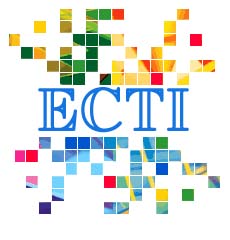Aggregating Method of Induction Motor Group Using Energy Conservation Law
Main Article Content
Abstract
This paper proposes a simple and efficient method for aggregating a group of induction motors, which are connected at the same bus. The parameters of aggregate motor are derived using a technique based on energy conservation law. An accuracy of the aggregate model parameters is veried by comparing dynamic responses obtained from the aggregate motor with the sum of individual motors. The presented technique gives accurate parameters in which the dynamic responses from the aggregate motor closely reflect the behaviour of a whole group of the motors under study.
Article Details
This journal provides immediate open access to its content on the principle that making research freely available to the public supports a greater global exchange of knowledge.
- Creative Commons Copyright License
The journal allows readers to download and share all published articles as long as they properly cite such articles; however, they cannot change them or use them commercially. This is classified as CC BY-NC-ND for the creative commons license.
- Retention of Copyright and Publishing Rights
The journal allows the authors of the published articles to hold copyrights and publishing rights without restrictions.
References
[2] D. S. Brereton, D. G. Lewis, and C. C. Young, "Representation of Induction-Motor Loads During Power-System Stability Studies," AIEE Trans. Power. Appar. Syst., vol. 76, pp. 451-461, Apr. 1957.
[3] G. J. Rogers, J. D. Manno, and R. T. H. Alden, "An Aggregate Induction Motor Model for Industrial Plants," IEEE Trans. Power. Appar. Syst., vol. 103, pp. 683-690, Apr. 1984.
[4] M. M. Abdel Hakim, and G. J. Berg, "Dynamic single-unit representation of induction motor groups," IEEE Trans. Power. Appar. Syst., vol. 95, pp. 155-165, Jan. 1976.
[5] F. Nozari, M. D. Kankam, and W. W. Price, "Aggregation of induction motors for transient stability load modeling," IEEE Trans. Power Syst., vol. 2, pp. 1096-1103, Nov. 1987.
[6] G. J. Rogers, J. Di Manno, and R. T. H. Alden, "An aggregate induction motor model for industrial plants," IEEE Trans. Power Appar. Syst., vol. 103, pp. 683-690, Apr. 1984.
[7] S. Sriharan, L. H. Tan, and H. M. Ting, "Reduced transient model of a group of induc-tion motors", IEEE Trans. Ener. Conv., vol. 8, pp.769-777, Dec. 1993.
[8] T. Y. J. Lem and R. T. H. Alden, "Comparison of experimental and aggregate induction motor responses," IEEE Trans. Power Syst., vol. 9, pp. 1895-1900, Nov. 1994.
[9] D. C. Franklin, and A. Morelato, "Improving dynamic aggregation of induction motor models," IEEE Trans. Power Syst., vol. 9, pp. 1934-1941, Nov. 1994.
[10] M. Taleb, M. Akbaba, and E .A. Abdullah, "Aggregation of induction machines for power system dynamic studies," IEEE Trans. Power Syst., vol.9, pp. 2042-2048, Nov. 1994.
[11] E. Pillay, S.M.A. Sabur and M.M. Haq, "A model for induction motor aggregation for power system studies," Electric Power Syst. Research, vol.42, pp. 225-228, Sept. 1997.
[12] T. Kataoka, H. Uchida, S. Nishhta, T. Kai and T. Fuaabashi, "A method for aggregation of a group of induction motor loads," Proc. Int. Conf. Power Syst. Technology, 2000, pp. 1683-1688.
[13] J. Pedra, L. Sainz, and F. Corcoles, "Study of Aggregate Models for squirrel-cage induction motors", IEEE Trans. Power Syst., vol. 20, pp. 1519-1527, Aug. 2005.
[14] K. W. Louie, J. R. marti, and H. W. Dommel, "Aggregation of induction motors in a power system based on some special operating condition", Proc. Canadian Conf. Elect. Comput. Eng., 2007, pp. 1429-1432.
[15] A. Kunakorn, T. Banyatnopparat, "Representation of a group of three-phase induction motor using per unit aggregation model," Proc. Int. Conf. Power Syst. Transient, 2009.
[16] A. Karakas, F. Li, S. Adhikari, "Aggregation of multiple induction motors using matlab-based software package," IEEE PES Power Syst. Conf. Exposition, 2009, pp. 1-6.
[17] P. Aree, and W. Nakawiro, "Eectrical Modeling and Simulation of Industrial Power System With Matab/Simulink Program," Proc. Int. Association Sci. Technology Develop. Conf., 2013, pp. 347-352

